Listen Up, Rookies

When they were in the NFL together, Panthers center Ryan Kalil and former teammates Jordan Gross (2003-14) and Geoff Hangartner (2005-13) got so fed up with the rookies that they created a handbook to teach new guys the ways of being a pro. Now that handwritten how-to is an actual book, The Rookie Handbook, and it covers so much more than how to buy a suit or find a seat on a plane amongst the veterans. Pro tips: don't put glue in a mouthpiece, and take an umbrella with you next time you go into a bathroom stall.
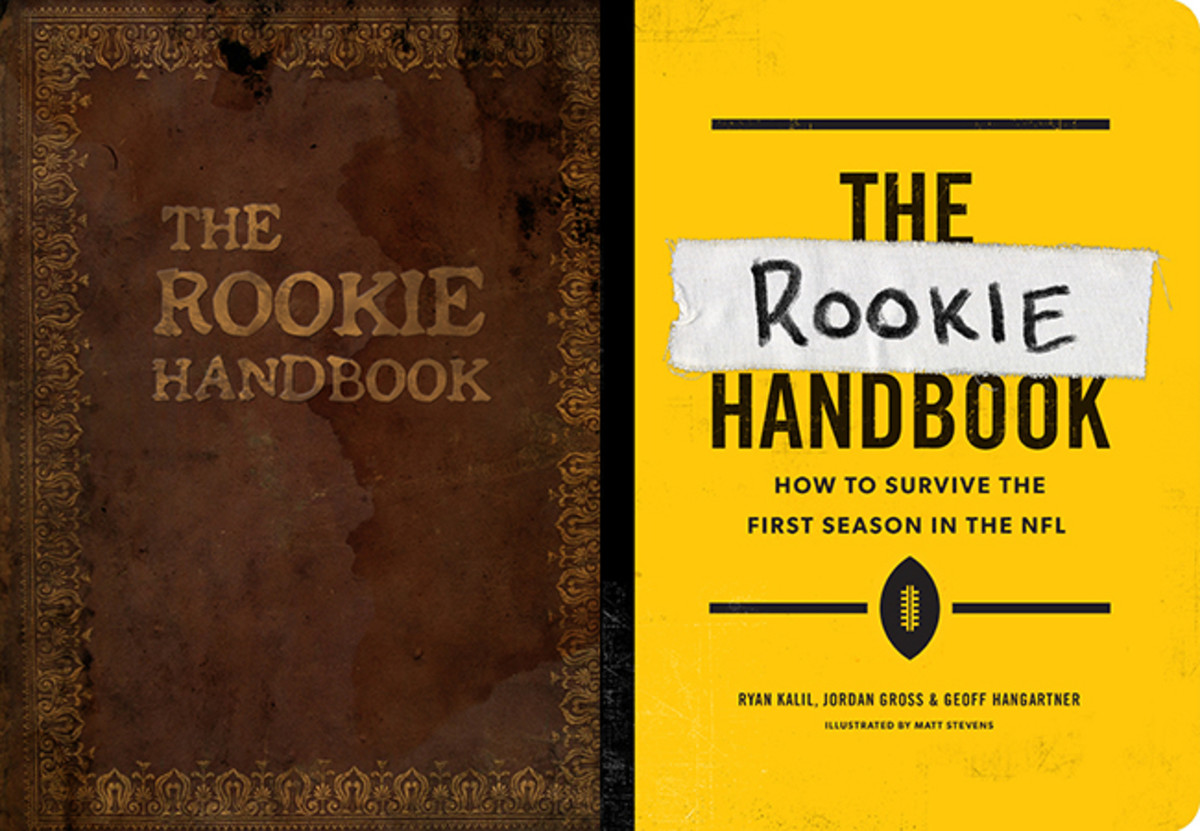
THE MMQB: Where did the idea to create a rookie handbook originate?
JORDAN GROSS: We all were fortunate to get to play together with the Panthers. I was with both of them each seven years apiece, and they played together five years with me. Our O-line room was a place that we had a lot of fun with. We had rookies every year and they had assignments they were supposed to do, like fill up the cooler with water and bring coffee for the veterans. But one year, around 2009 or 2010, we had a group of rookies that were just terrible at remembering to do their job. They were so bad at it that we actually wrote them a rookie handbook.
GEOFF HANGARTNER: None of the rookie duties were overly hard—bring donuts on Saturday morning—but for whatever reason these guys couldn’t remember. It’s kind of a rite of passage. As a rookie you fill up the water, so that when you aren’t a rookie anymore there is always water in the room. Guys just couldn’t remember to do these things so we had to write it out for them.
RYAN KALIL: It originally started out as a guide to what responsibilities a rookie had for our offensive line meeting room. And then as the years went on, we started very sarcastically writing other things that are more broad, commonsense things, like how to not be an idiot and how not to make your coach mad. Guys in other position groups found it very amusing so they would start to contribute verbally. We would write down what they would say and it became a fun thing to go back and look at all the stuff.
JORDAN GROSS: Ryan Kalil is such a creative guy that he made it with script writing and calligraphy and had it in this leather-bound book. So we gave it to them and it was really funny. Ryan said we need to make this a book someday.
RYAN KALIL: We kept it in the back of our minds that we would write it. Years later my two colleagues here retired and had a ton of free time on their hands. So they said, Hey we should write that book now.
THE MMQB: Were some rules inspired by your own rookie mistakes?
GEOFF HANGARTNER: A lot of stuff in the book came from our own personal screw-ups. That’s where we came up with a lot of it because we were rookies at one point and we thought we had it all figured out.
JORDAN GROSS: What you don’t understand as a young player is the point of these tasks isn’t necessarily just to make you do things, it’s to see if you can follow through with an instruction and see how competent you are at delivering it fast. When I was a rookie, one of our veterans Todd Steussie, he wanted a cappuccino machine. I held my ground and said no. But now, looking back on it, I totally should have bought the cappuccino machine. As a rookie I was good with the tasks of keeping the O-line room stocked with blow pops and mini-Snickers bars and coffee, but I didn’t understand how much an older guy with kids needs a cappuccino machine. Now I get it. When I had a kid and I started needing some caffeine in the afternoon, I thought, Man, a cappuccino machine would be pretty nice. When I got to be an older player, I ordered all these different flavored coffee cups for the Keurig and sweeteners and swizzle sticks; it was like a Starbucks in our O-line room.
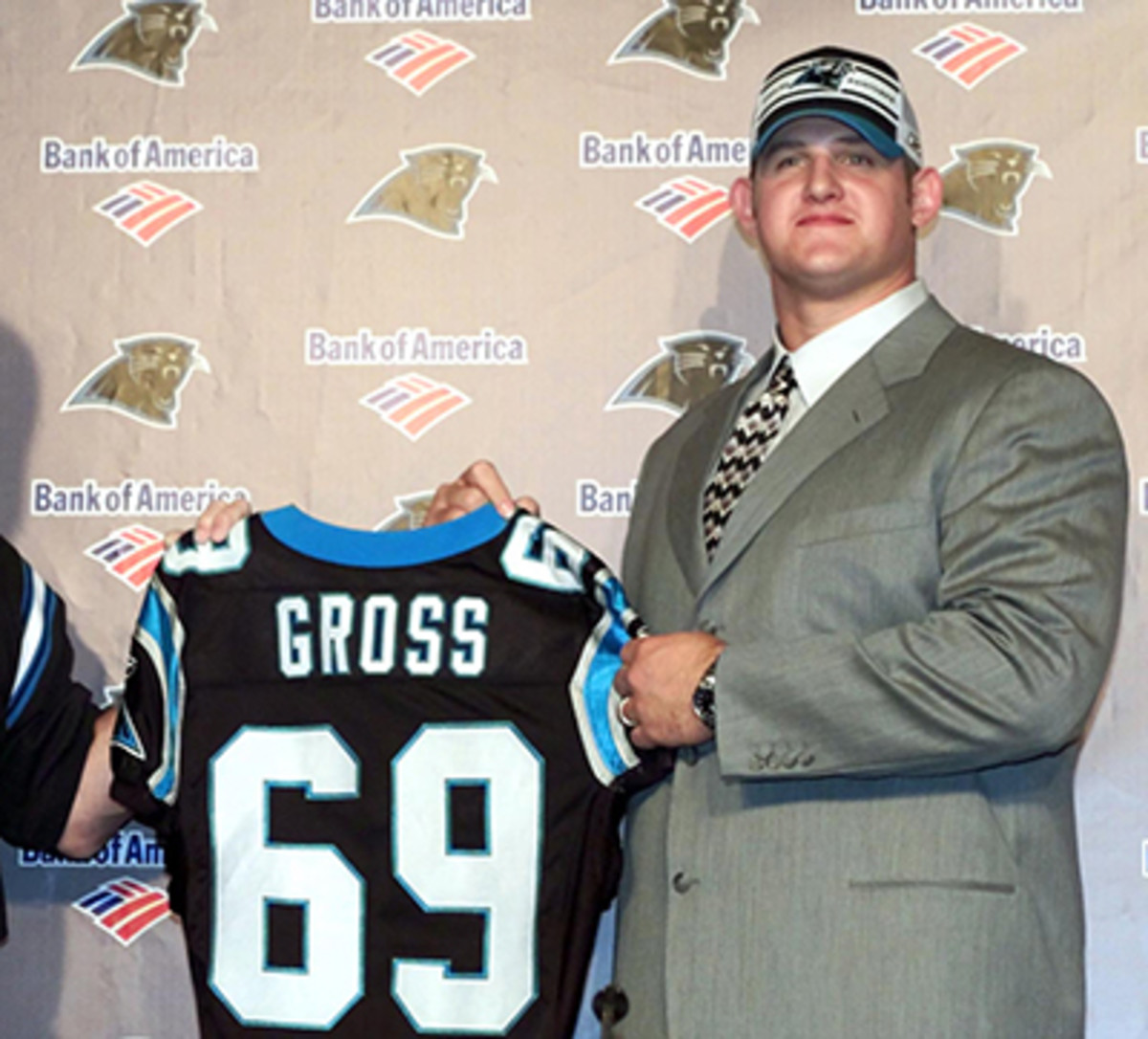
GEOFF HANGARTNER: We mention guys buying custom-made suits in the book and we say to not go crazy for a reason. There are some pictures that we really laugh at today of Jordan Gross on his draft day in 2003. He wore this custom suit that he had made that was extra baggy. It’s just a bad suit and he thought it looked super cool and he probably spent a bunch of money on it. Looking back now, that was just a terrible idea. I hate to call out another fellow author, but we also mention the importance of turning the page and not wearing college gear anymore—and I think Kalil still might have a USC football bag that he takes on road trips. I know he had a luggage tag that he kept on his luggage for as long as I was playing.
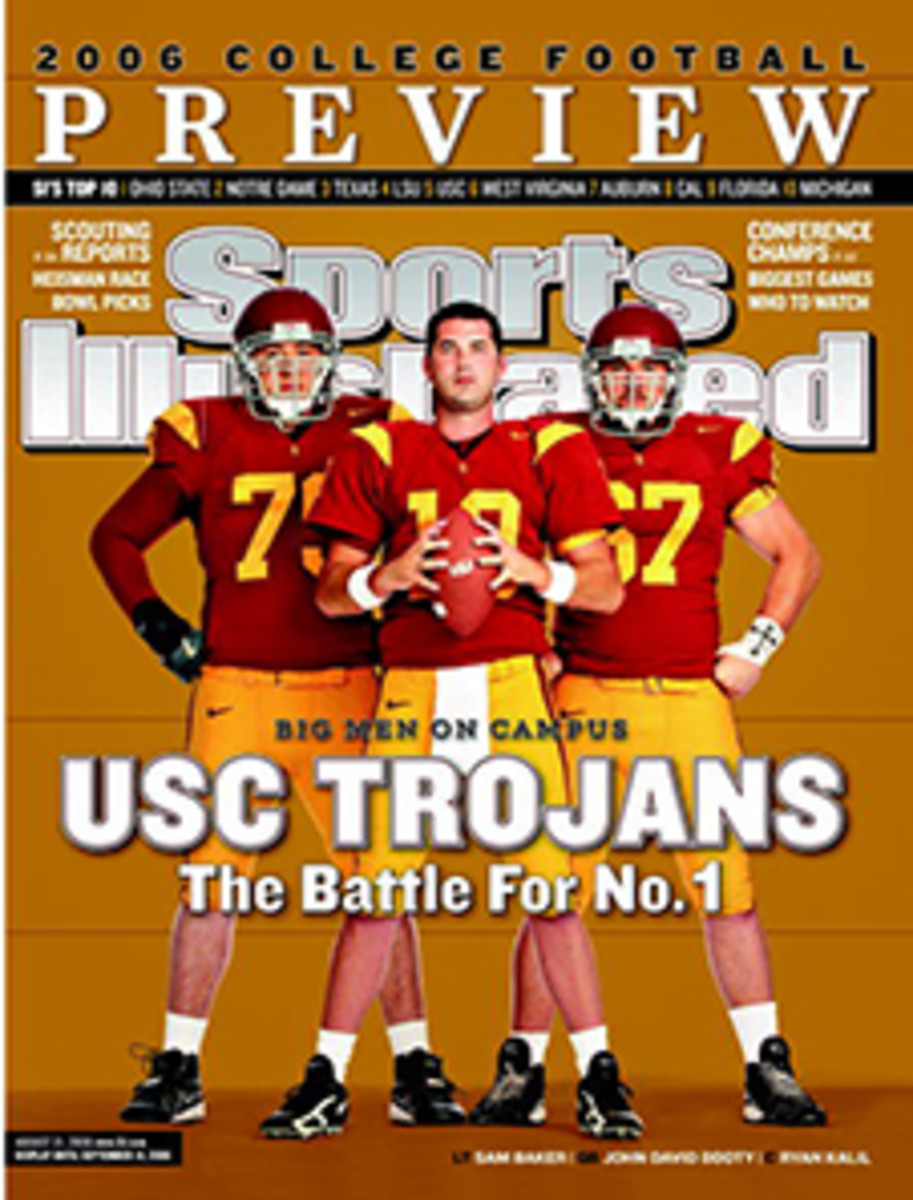
He’s right. I did for a long time. I am definitely guilty of not turning the page. But I also want to point out that I had better college experience than Geoff did at Texas A&M. I am more proud of my school than he is. At some point you have to turn the page, but it’s not like you can’t ever support your team or wear a shirt of your school and have pride that way. But there are some guys who dress like they are still in college every day. The Oregon guys; they are the absolute worst. Every day it looks like they are still on campus like it’s travel day and they are getting ready to jump on an airplane and go somewhere to play in the PAC- 12. The Oregon guys, they don’t just wear one thing, a shirt or a pair of pants. No, it’s an entire jumpsuit with green shoes, Oregon hat, Oregon backpack. There are a few other schools that are like that, I won’t name any names, I don’t want to call [Panthers linebacker] Thomas Davis out, but he tends to wear way too much Georgia stuff. It’s time to switch it up.
THE MMQB: Have you showed the Rookie Handbook to any current players or coaches?
RYAN KALIL: Coach [Ron] Rivera loved it and he thinks that all rookies should have it, which I agree. I sent a couple pages to my buddy [Jets center] Nick Mangold in New York, he heard about it and he wanted to know more about it. I sent him the section about music wars in the locker room and he laughed and said it was so true. I enjoy hearing the perspective of other guys and what they think around the league. We really wanted this to be a book that spoke to what the culture was like around the entire league and not just the Carolina Panthers. Fortunately for us, the NFL is a revolving door of players. Even though we have been in Carolina our entire careers, we really got a great sense of what the culture was like around the league by interacting with guys who had played in a lot of different places. We really did have small focus groups of former and current players around the league where we would call and ask, "Hey, when you played was this something that happened to you or is it something that just happens here?" We really tried to include only things we thought were pretty universal around the league.
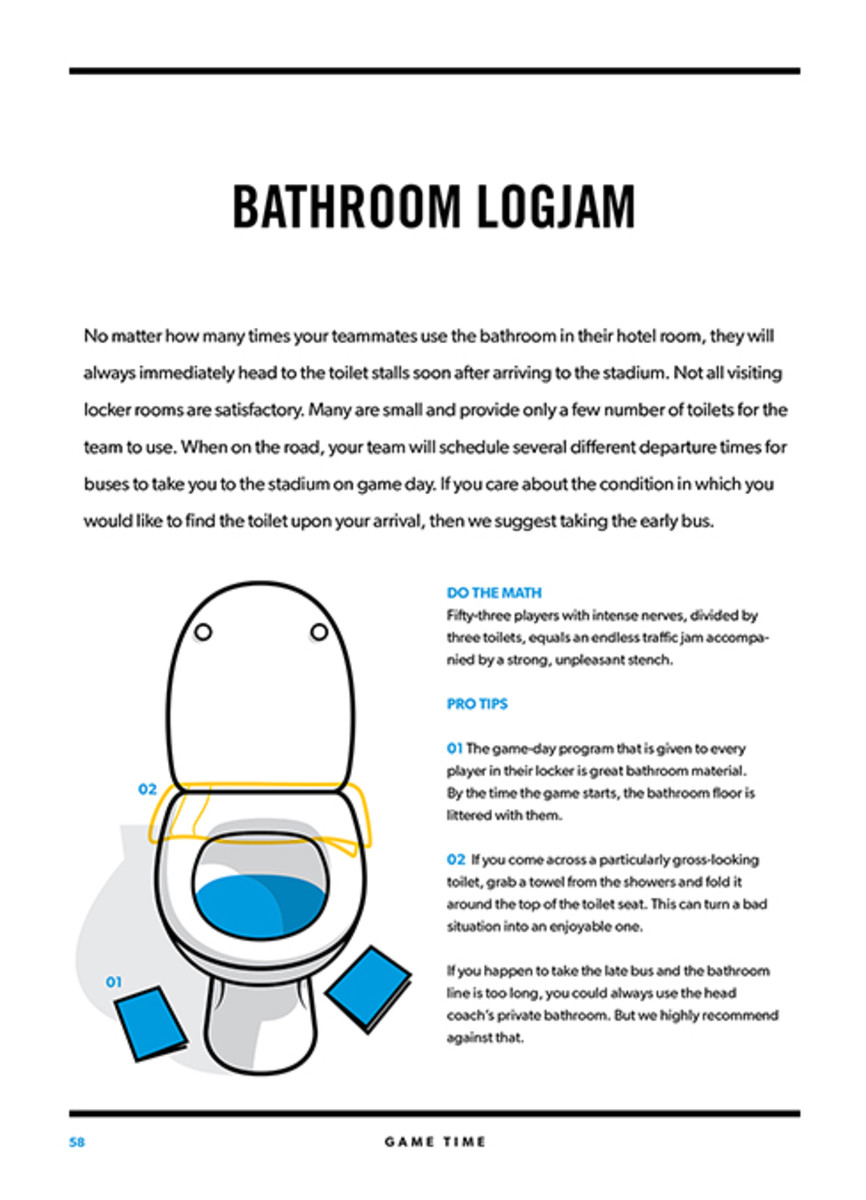
THE MMQB: Let’s go through some of those universal guidelines, starting with something I never had thought about: How to avoid the bathroom logjam in the visitors' locker room, which usually has a limited selection of toilets. Which stadium has the worst visitors' bathroom?
JORDAN GROSS: New Orleans was the worst. I think they only had three toilets. It might have been two, but it was no more than three. You have guys that have eaten and are all hydrated and everybody is nervous and everybody has been drinking coffee and you get to the stadium and it is just disgusting. So our advice for the rookies to always go the bathroom in the hotel room before leaving and then at least you can avoid the mad rush. It would literally be guys standing there waiting, with the gameday program under their arm, just waiting for an opportunity to go into a stall. At the home games, you knew where other bathrooms were at the stadium, but at away games it was harder. When Rivera became the head coach, we had a good enough rapport that I would use his bathroom, because the head coach has their own locker room.
GEOFF HANGARTNER:It’s harder to remember one that has a good setup for a bathroom. They are all bad. I think that teams do the minimum for the visitors' locker room because it is not really in their best interest to make you overly comfortable. If they can put two stalls in a locker room for 53 guys or more, then that is what they do.
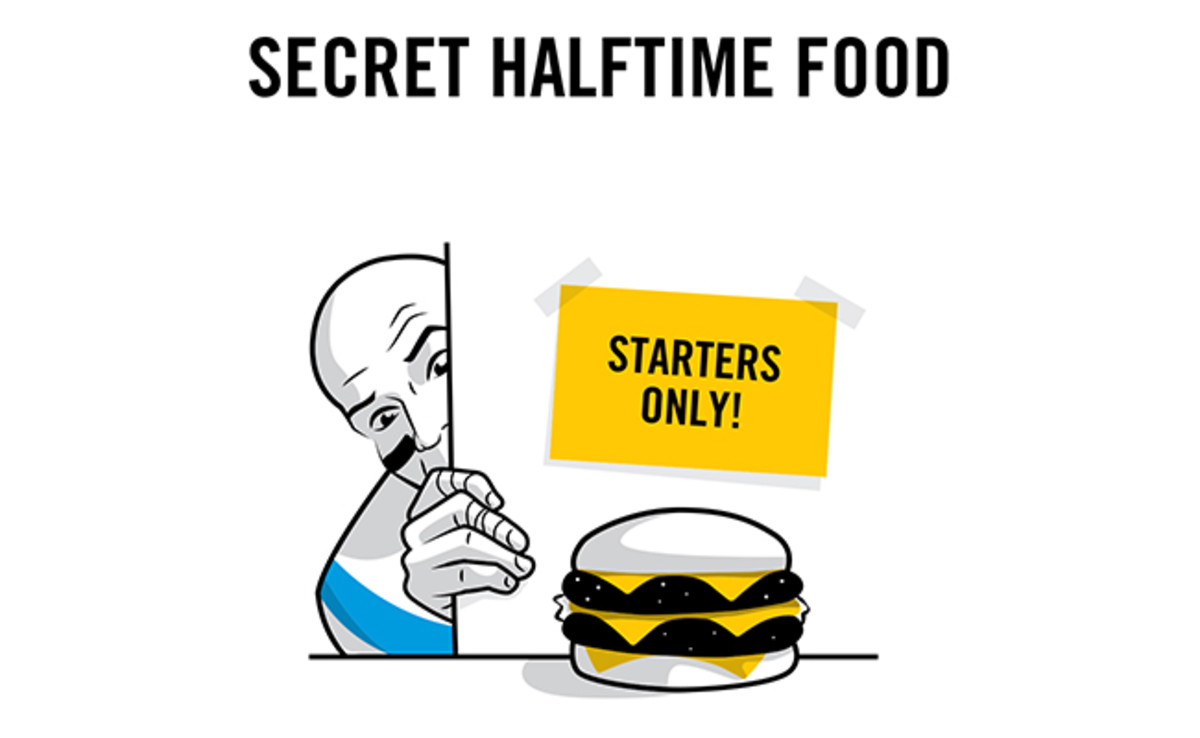
THE MMQB: Before reading the book, I’d never heard of the secret halftime meal just for starters during preseason games. How does that work?
RYAN KALIL: That is something that really exists. People think we put that in there as a prank to trick rookies, but it is something that is real. There are a select few veteran guys that know about this and it’s sort of a secret club. It doesn’t happen everywhere, and even if it does happen, it doesn’t necessarily mean that the veterans are going to admit to it, because it is still a secret club. It’s for the older guys who are only playing a certain amount of snaps in the game, the preseason games where you are only playing a series or just a quarter. At halftime you are changing into a more comfortable shoes. As the rest of the guys are getting ready to go out for the second half and you know you are done for the day, you go into the equipment room and eat the leftovers of whatever the equipment managers don’t eat. We just go and piggyback off of their food. It is really at the discretion of whatever food they have. The standard is usually hot dogs or some kind of chicken sandwich or sandwich station. You go in for a quick eat because you still feel somewhat guilty for eating while the other guys are getting ready to go out for the second half. You don’t lounge in there because you still have to be around the guys and it’s still a serious day. If you are really feeling gutsy you can maybe try to throw in a second sandwich, but you don’t get much time because you have to show face and get back in the locker room to go over the game plan and the halftime adjustments.
THE MMQB: Another section of this book goes over different types of locker room pranks and what to watch out for. What prank made you the angriest?
GEOFF HANGARTNER: The one that made me the maddest was the cold water dumped on you when you’re on the toilet. We had a bathroom where you could lock the door and it was a one-seater. I would go in there in the morning because I got water dumped on me a couple times and there is nothing worse than trying to take care of your business and then all of a sudden you are doused with five gallons of freezing cold water. There were a couple culprits that you always had to watch out for. Jake Delhomme and Steve Smith, those guys thought it was hilarious. If I knew that they were in the building, I would not go into the bathroom.
One day, someone had an elaborate plan to get back at Delhomme and dump cold water on him. Delhomme knew that we were after him and that people were getting mad that he kept throwing cold water on everyone. So he literally took an umbrella into the stall with him. And he put the umbrella up so when somebody poured cold water on him, he came out laughing and holding his umbrella. I just thought that was hilarious.
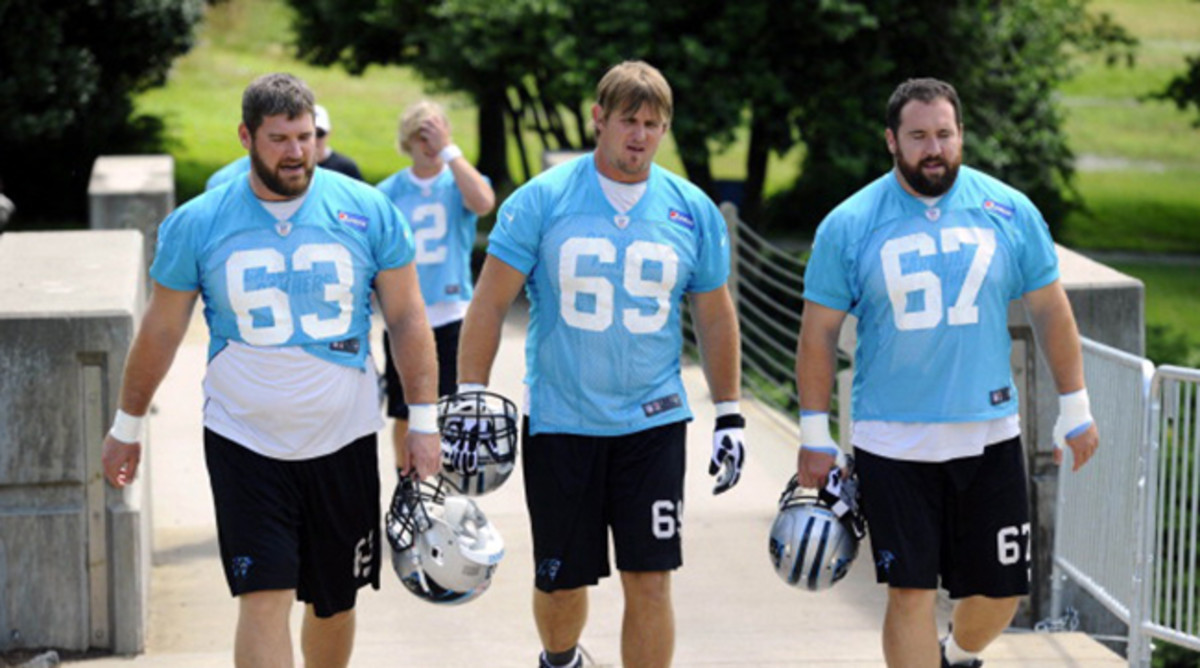
THE MMQB: Ryan, you mentioned music wars earlier. How do you decide who plays the music in the Panthers' locker room?
RYAN KALIL: We still have this argument today. It is still music wars. Our locker room is really long so there are three or four big stereos that are played before practice. Jonathan Stewart and Mike Tolbert have one, Tre Boston in the cornerback section has one, Charles Johnson has a huge one and I want to say Cam [Newton] has a smaller one. Those four speakers that are going on sort of compete with each other. We just let it go on and if they start to get too loud, or one is overpowering another one, you let the mob decide which stereo they want to hear the loudest. Typically Tolbert and J-Stew are the self-proclaimed DJs of our locker room. They have a good eclectic taste. Some of the Southern boys really love only stuff from the south and Stew is very good about playing everything. There are almost like music zones in our locker room, if you walk across the whole locker room, you’ll see we have almost figured out the volume to where we can just stay within our zones and it doesn’t affect the whole room. I’m in Cam’s zone. I like Cam’s playlist. He plays everything, he plays gospel, hip hop, current hits. I’ve even heard Bieber play out his speaker, there is only one Bieber song he really likes though.
THE MMQB: There is a section in the book on how to get along with your travel roommate. Do you have any memorable hotel stories?
GEOFF HANGARTNER: My roommate was fairly tame for the most part. I can tell you a story about him but I can’t name him. So my rookie year I’m sitting in my hotel room and all of a sudden my unnamed roommate walks in and I’m like, “Hey what’s up?” And he just goes, “Mmm… mmm…” He doesn’t open his mouth or say anything. He immediately disappears into the bathroom for a half hour and I’m like what’s going on here? I ask him,”Dude, are you OK?” It turns out he has gotten a gold and diamond encrusted mouthpiece that he had custom-made stuck in his mouth. It was supposed to be removable and whoever the guy was that made it put some glue in there, I don’t know if the jeweler didn’t know he wanted to be able to take it out, but there was some miscommunication. So he literally had this gold and diamond encrusted mouthpiece stuck in his mouth and was trying to get it out and couldn’t get it out. He had to go to meetings that night with his mouthpiece in and people could not stop laughing at him.
The Rookie Handbook is available now wherever books are sold.
